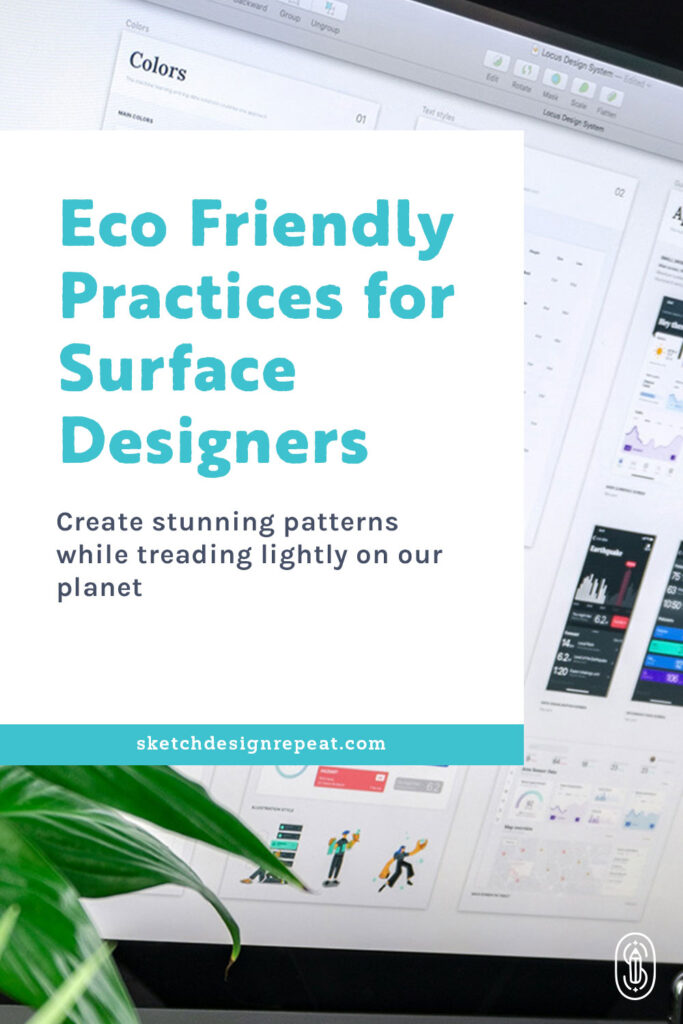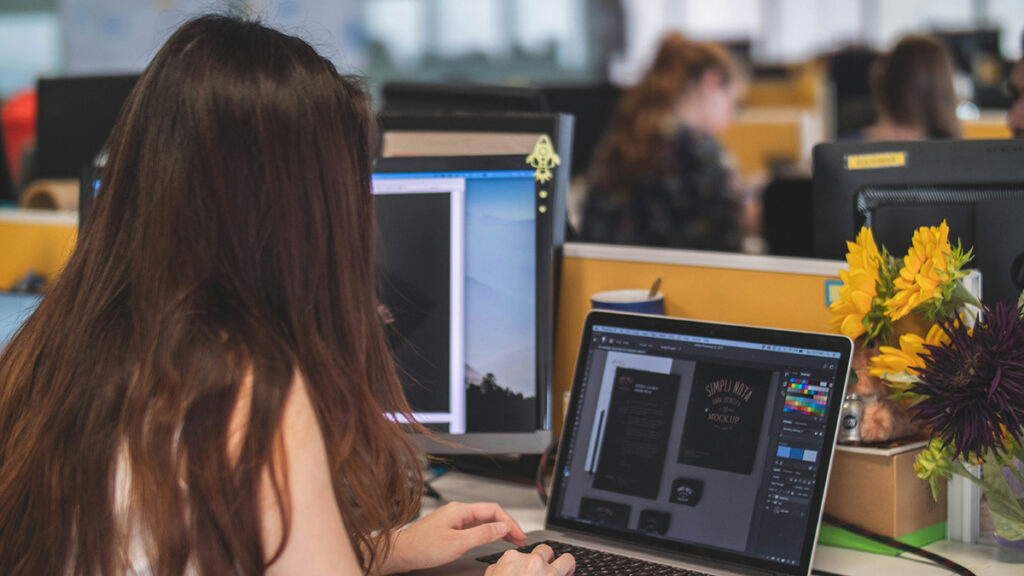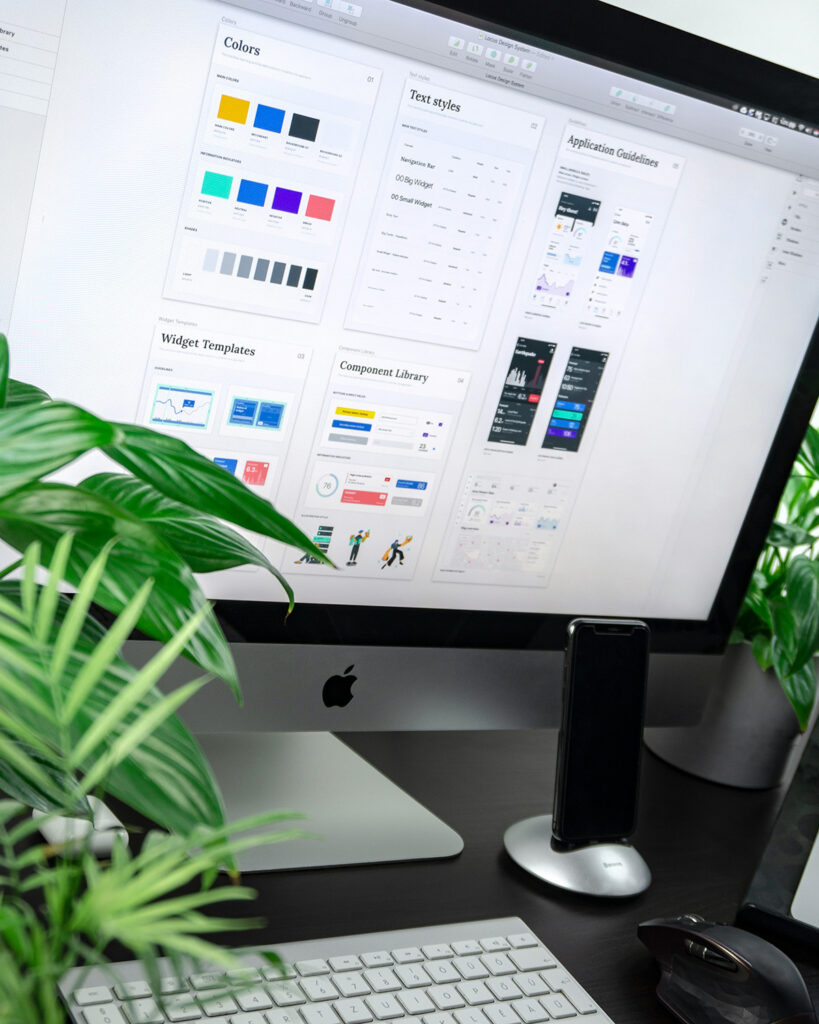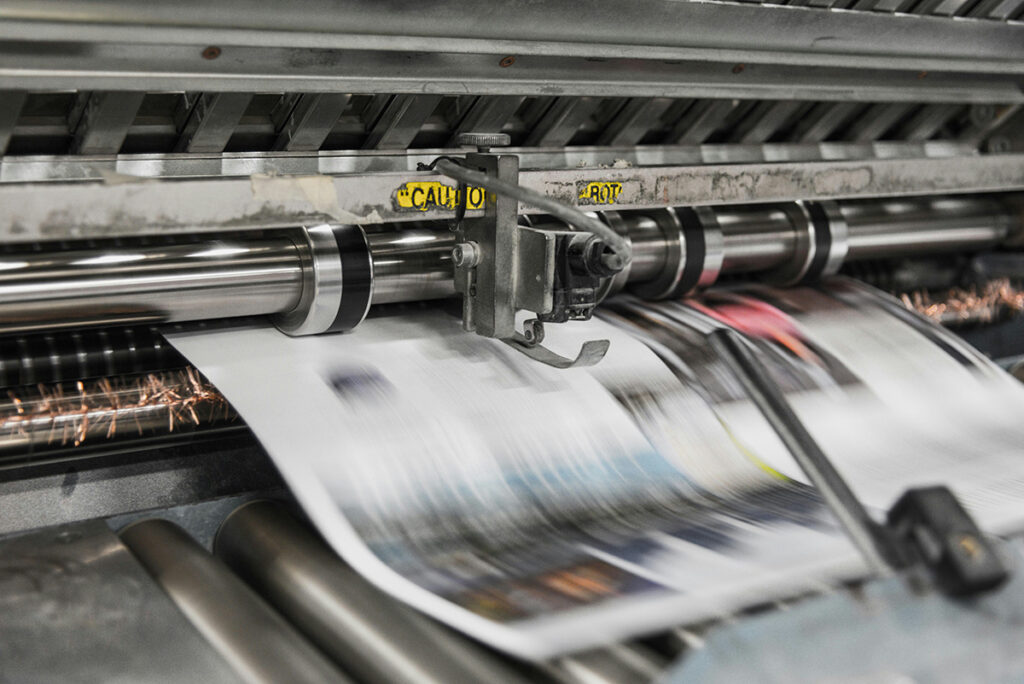Surface pattern design, while creative and vibrant, isn’t always perceived as environmentally friendly. However, in an era where climate change is an urgent reality, designers have a unique opportunity to make a significant positive impact. In this guide, we’ll demystify eco-friendly practices for surface pattern designers, offering practical solutions to reduce our carbon footprint without compromising artistic vision.

We’ll explore how to optimize your digital workflow for sustainability, from choosing energy-efficient hardware to managing software resources effectively. You’ll learn strategies to minimize digital waste, advocate for responsible printing methods, and make informed choices about materials and processes. By implementing these practices, you’ll not only reduce your environmental impact but also inspire others in the industry to embrace a greener design future. Let’s discover how we can create stunning patterns while treading lightly on our planet.

The Environmental Impact of Digital Design
According to a report by the Sustainable Digital Design initiative and Wonderland Studio, “the average digital designer produces 1.36kg CO2 per day and 319kg per year. That’s roughly the equivalent of that same designer taking a one-way flight from Amsterdam to Lisbon (338kg).”
Data centers, the physical facilities that organizations use to store their applications and data, are the biggest emitters. The International Energy Agency reports that “data centers consume approximately 200 terawatt-hours (TWh) of electricity, or nearly 1% of global electricity demand, contributing to 0.3% of all global CO2 emissions.”
The amount of hazardous electronic waste produced each year is staggering. The World Counts estimates it at around 40 million tons worldwide annually, equivalent to discarding 800 laptops every second. Alarmingly, e-waste also makes up 70% of our overall toxic waste.
These statistics paint a bleak picture, highlighting the importance of responsible digital design practices that surface pattern designers can adopt to build an eco-friendly practice. While we can’t control everything, there are steps we can take to make a positive impact despite these alarming numbers.
Eco-Friendly Hardware and Software
Designers can invest in energy-efficient hardware and software, which offer numerous benefits. These solutions consume less power, leading to significant savings over time through lower monthly energy bills. They also reduce greenhouse gas emissions, pollution, and water use. Additionally, energy-efficient hardware can deliver better performance and reliability, while energy-efficient software is often faster due to optimization, resulting in an improved user experience with more responsiveness and extended battery life.
Best Practices for Energy-Efficient Hardware
- Use Energy Star-certified products, which are designed to save power and money.
- Enable power management features, such as setting your monitor to automatically enter sleep mode after a period of inactivity.
- Turn off your monitor when not in use. Energy Star monitors consume 1 watt or less when turned off.
Energy-Efficient Software Options
- Adobe Creative Cloud: Offers optimized performance and cloud-based collaboration tools.
- Affinity Designer: Known for its speed and efficiency, particularly on older hardware.
- Krita: An open-source painting program that’s lightweight and energy-efficient.
Benefits of Responsible E-Waste Disposal
A huge impact can be made by responsibly disposing of your hardware by recycling or donating it. Benefits include:
- Preventing contamination of ecosystems and reducing greenhouse gas emissions.
- Conserving resources by recovering valuable materials for new products, reducing the need to extract raw materials from the earth.
- Protecting sensitive and confidential information found in discarded electronic devices.
- Extending the life of aging equipment through reuse programs.
- Potential tax deductions from donating electronics.
Cloud-Based Design Tools
A solid way to be more eco-friendly is to seek out and use cloud-based design tools and software that focus on reduced storage needs and efficient data management.
Some options include:
- Canva: Offers a wide range of design tools with cloud storage and collaboration features.
- Figma: A powerful design tool that runs entirely in the browser, reducing local resource usage.
- Adobe Creative Cloud: Provides cloud storage and syncing across devices for efficient workflow.

Smart File Management for Designers
Organized file management is crucial because it helps reduce file duplication and wasted storage space. It allows you to easily locate specific design elements, versions, and project files quickly, preventing unnecessary recreation of assets. This streamlines your workflow and ultimately saves time and storage capacity by avoiding redundant copies of the same file across multiple locations.
Best Practices for Good File Management
- Establish a clear folder structure by organizing files into project folders with subfolders for different design stages such as sketches, mockups, and final assets.
- Use consistent and descriptive file naming conventions that include the project name and version number. For example, “logo-design-v2-final.jpg.”
- Utilize digital asset management software to manage and store design assets, enabling easy search and access. Adobe Bridge is a good digital asset management software that is integrated with Creative Cloud, offering robust organization features.
An important consideration when choosing a cloud storage provider is ensuring they offer strong security measures like data encryption, two-factor authentication, and regular security audits.
Related Article: How to Back Up Your Digital Design Files
Minimize Waste by Designing with Intention
While it might not seem like an obvious way to be eco-friendly, clear communication with your clients can go a long way in reducing digital waste. Effective communication helps minimize the need for multiple design iterations and unnecessary digital mockups, thereby reducing the energy consumption and storage requirements associated with each project.
To enhance client communication:
- Establish clear project goals and expectations from the outset
- Use detailed briefs to capture all necessary information
- Schedule regular check-ins to ensure alignment throughout the design process
- Utilize collaborative tools for real-time feedback and revisions
Just as keeping files organized is important, utilizing design libraries and assets efficiently is crucial to avoid unnecessary file creation. Many design software suites offer built-in asset management tools. For instance, Adobe Creative Cloud users can leverage Creative Cloud Libraries to organize frequently used assets, including graphics, character styles, and colors. This centralized approach not only streamlines workflow but also reduces redundant file creation across projects.
Another effective strategy is creating Alias files, which are essentially shortcuts to original files. This technique helps eliminate the need for duplicate files across project folders, saving storage space and reducing the risk of version inconsistencies.
To further minimize digital waste:
- Regularly audit and clean up your digital workspace, deleting unnecessary files and outdated versions
- Optimize file sizes for their intended use (e.g., lower resolution for web, higher for print)
- Use vector graphics where possible to maintain quality while minimizing file size
- Implement a version control system to track changes without creating multiple file copies

Promoting Sustainable Printing
Traditional printing methods have numerous negative environmental impacts. The production and operation of printing machines consume significant energy, contributing to greenhouse gas emissions. They also generate substantial waste from paper, ink cartridges, and printing plates, which often end up in landfills. Contaminated water sources from chemicals used in paper production and ink are also a concern, not to mention the deforestation and air pollution from the paper industry, printing, and transportation of materials and products.
Advocating for and choosing to collaborate with clients and manufacturers who employ eco-friendly printing practices can make a substantial difference.
Ways to Reduce the Environmental Impact of Printing
- Use recycled paper, which requires less energy and resources to produce
- Employ digital printing methods that use less energy and produce less waste than traditional printing methods
- Opt for soy-based inks, which spread further than petroleum-based inks and produce brighter colors
- Choose low-impact fabrics such as recycled, organic, and regenerative cotton, which are designed to minimize their environmental impact throughout their lifecycle, from production to disposal
- Implement on-demand printing to reduce overproduction and waste
- Utilize water-based inks that are less harmful to the environment
- Consider alternative materials like bamboo or hemp, which grow quickly and require fewer resources
Sustainable Fabric Choices for Surface Pattern Design
- Organic cotton: Grown without harmful pesticides or synthetic fertilizers
- Recycled polyester: Made from post-consumer plastic bottles, reducing waste
- Tencel: A sustainable fabric made from wood pulp in a closed-loop process
- Hemp: Requires less water and no pesticides to grow
As surface pattern designers, we can also:
- Design patterns that use fewer colors to reduce ink usage
- Create timeless designs that won’t quickly go out of style, reducing the need for frequent reprints
- Educate clients on the benefits of sustainable printing practices
In today’s world, where environmental concerns are paramount, surface designers have a unique opportunity to make a significant positive impact. By implementing eco-friendly practices in our digital workflows, hardware choices, file management, and printing decisions, we can substantially reduce our environmental footprint.
Every action, no matter how small, contributes to a more sustainable future. By adopting these practices, we’re not only benefiting the environment but also enhancing our productivity and setting an example for others in the industry to follow. As surface pattern designers, we have the power to create beautiful designs that inspire while also promoting a healthier planet.
Let’s embrace this opportunity to lead the way in sustainable design practices. Share your eco-friendly techniques with fellow designers, educate clients on the importance of sustainable choices, and continue to seek out new ways to reduce our industry’s environmental impact.

Written by Cody Alice Moore
Website: www.codyalicemoore.com
Instagram: @codyalicemoore
Class: Client Feedback Strategies for Creatives
Cody is an artist, illustrator, and surface pattern designer with over 15 years of experience. Cody discovered surface design while working for four years as an art buyer for a national photo lab. Since 2019, she has been creating art full-time for her budding portfolio and growing collection of licensed designs.
Great tips, Cody! Much appreciated.